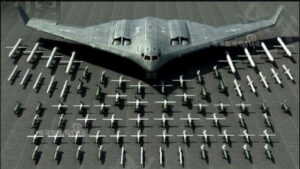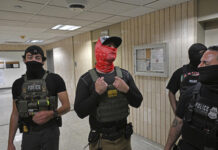MARCH 17, 2023

Specifically, the 2018 report discusses the H-20 range with a mind to Asia, explaining that the H-20s reported range would “expand long-range offensive bomber capability beyond the second island chain,” placing areas such as the South China Sea at risk.
H-20: The stealth factor
While the H-20 certainly looks quite stealthy as it very closely seems to replicate a B-2 design, there are still likely many questions as to just how “stealthy” the aircraft is and the true extent to which it might rival the B-2 or even B-21.
The success of stealth depends to a large extent upon external configuration as a rounded fuselage without vertical structures or protruding parts and fins is clearly much less likely to generate a return radar signal, but there is much more to stealth to be sure. The true measure of the H-20’s ability to compete with the B-2 and B-21 also relates to its thermal management, meaning the extent to which it can reduce the heat signature coming from the exhaust.
The more a stealth aircraft and its surrounding air aligns with the temperature of the atmosphere, the less detectable it is to thermal sensors looking to spot “heat” in the atmosphere. Another critical area of stealth is the potential use of radar absorbent coating materials, something US stealth bombers of course make extensive use of. However, what kinds of materials do the Chinese have for the H-20? Are they in any way comparable?
Also, what is its speed and altitude, as those are survivability-enhancing variables as well, given that an aircraft able to fly higher and faster will also be much more difficult to target.
The entire concept of stealth, particularly broadband stealth such as that used by stealth bombers, is to not only elude “engagement” radar and avoid being targeted or tracked by enemy radar, but to ensure an enemy detects “nothing” and does not know the aircraft is over its airspace.
A stealth bomber is designed to look like a small bird to enemy radar systems, as there are no protruding structures, jagged sharp edges or antennas likely to generate a return “rendering” to electromagnetic pings sent from ground-based air defenses.
The idea is to not only avoid “engagement” radar and prevent itself from being targets but also to avoid lower frequency “surveillance” radar which cannot target but may simply inform an enemy that something is “there.”
The aim of a B-2, and likely the H-20 as well, is to prevent an enemy from knowing there is anything threatening in the sky above them.
At the same time, apart from the issue of stealth, the effectiveness of bombers such as an H-20 also relies heavily upon sensing, mission systems and computing. Ultimately, should a bomber have an ability to instantly process fast-arriving new target information and use advanced fire control and weapons-specific software, it might be well positioned to strike effectively without having to “linger” or be vulnerable to enemy air defenses for a long period of time.
Kris Osborn is the Military Affairs Editor of 19FortyFive and President of Warrior Maven – Center for Military Modernization. Osborn previously served at the Pentagon as a Highly Qualified Expert with the Office of the Assistant Secretary of the Army—Acquisition, Logistics & Technology. Osborn has also worked as an anchor and on-air military specialist at national TV networks. He has appeared as a guest military expert on Fox News, MSNBC, The Military Channel, and The History Channel. He also has a Masters Degree in Comparative Literature from Columbia University.
Courtesy: 1945








































































































